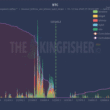Federal Reserve Chair Jerome Powell has cautioned that Trump-era tariffs are set to increase consumer goods prices and push inflation past target levels this summer. While this macroeconomic warning has yet to spark a reaction from crypto markets, investors are watching closely as economic uncertainty grows.
Powell Flags Inflationary Pressures from Tariffs
During the June 18, 2025, Federal Open Market Committee (FOMC) press conference, Chairman Jerome Powell drew attention to renewed inflation risks stemming from tariffs imposed during the Trump administration. Powell stressed that these tariffs, now beginning to ripple through global supply chains, are expected to boost the prices of everyday household goods throughout the coming months. He emphasized that while the effects are gradual, the burden created by tariffs will ultimately be borne by consumers at checkout—resulting in elevated inflation readings by mid-2025.
Central Bank Adjusts Policy Outlook—Crypto Market Remains Unmoved
Supporting Powell’s outlook, the Federal Reserve revised its year-end inflation forecast upward from 2.7% to 3.0%, signaling that price growth will overshoot the Fed’s longstanding 2% target. Despite rising inflation concerns, the FOMC opted to keep interest rates unchanged for now, signaling that policymakers seek more clarity on inflation’s real-time impact on consumer confidence and business activity. Notably, immediate reaction in digital assets has been muted; Bitcoin prices have moved little since the policy update, although seasoned investors recall that similar macro moves have previously affected crypto markets with a time lag.
Key Stats & Figures
- Fed Inflation Projection (2025): Raised from 2.7% to 3.0% as tariffs feed through the supply chain
- Current Bitcoin Price: $105,187.72 (as of 00:44 UTC, June 19, 2025)
- Bitcoin Market Cap: $2.09 trillion, reflecting major digital asset weight
- 24-hour BTC Change: Up 0.42%, but down 3.18% for the week; trading volumes dropped 12.58%
Tariff Impact Echoes Prior Economic Trends
The consequences of tariff policy are not unfamiliar to economists or investors. Previous rounds of U.S. tariffs in 2018 resulted in delayed but inevitable price hikes on goods like electronics, echoing Powell’s current warning. This parallel suggests that the full inflationary effects could take several months to materialize, potentially altering household spending and broader economic conditions. Crypto research teams, including Coincu, note that while digital assets have remained stable for now, sustained inflation could eventually motivate more investors to seek out decentralized hedges such as Bitcoin.
Conclusion: What This Means for the Market
With inflation anticipated to breach target levels and monetary policymakers opting for a patient approach, the coming months could prove pivotal for both traditional and digital markets. If macroeconomic volatility intensifies, historical precedent suggests cryptocurrencies may become increasingly attractive as portfolio hedges—even though such shifts have yet to materialize in price charts. Market participants will be closely attuned to both inflation data and crypto’s reaction as the economic landscape evolves.
